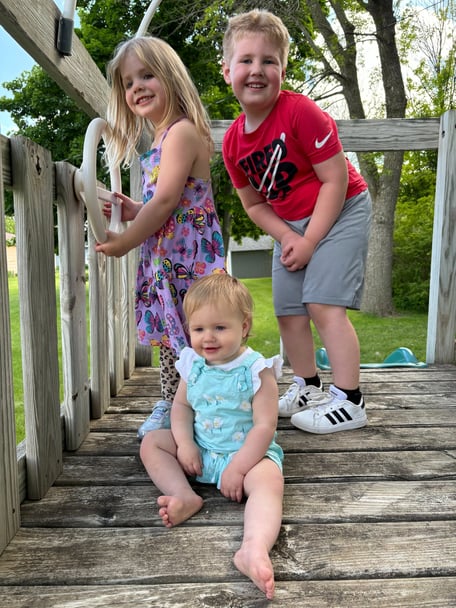Play and Language
7/6/20242 min read


Play is an essential part of child development. It is seen universally, across all cultures and life situations. It can begin in infants as young as 6 weeks old with social smiles back and forth between the infant and caregiver. Play impacts brain development, how we handle stress, executive function skills such as attention and inhibition, social skills, early math skills, physical development, and language skills. Play is when learning occurs.
An article from the American Academy of Pediatrics defines play as, “an activity that is intrinsically motivated, entails active engagement, and results in joyful discovery. Play is voluntary and often has no extrinsic goals; it is fun and often spontaneous” (Yogman et al., 2018). It’s no wonder that play is the perfect vehicle for language learning. It is important for communication and language to be intrinsically motivating and actively engaging so that children can spontaneously express themselves and participate in back and forth conversations. Communication should never be seen as a work task that has to be completed in order to get an external reward. We communicate for a variety of functions and purposes including commenting, gaining/sharing attention, requesting, directing others, social routines, expressing feelings, protesting, and asking/answering questions. These all can be used during play and natural contexts.
Play has a developmental hierarchy that is correlated with language development. Attunement is the earliest form of play which involves parent-child interactions, such as smiling and cooing back and forth. This also supports the back and forth interactions needed for language development. As children progress through the stages of play, their language also becomes increasingly complex. At later stages, children use imaginative play and pretend with their peers to engage in social situations. One child may pretend to be the teacher and another the student. We may see the children using all of the functions of communication with elaborate dialogue as they engage in play.
Play-based speech therapy intrinsically motivates and actively engages children in therapy. This allows them to learn new language skills and use them to communicate spontaneously throughout their day.
Yogman, M., Garner, A., Hutchinson, J., Hirsh-Pasek, K., Golinkoff, R. M., Baum, R., Gambon, T., Lavin, A., Mattson, G., Wissow, L., Hill, D. L., Ameenuddin, N., Chassiakos, Y. (Linda) R., Cross, C., Boyd, R., Mendelson, R., Moreno, M. A., Radesky, J., Swanson, W. S., & Smith, J. (2018, September 1). The power of play: A pediatric role in enhancing development in young children. American Academy of Pediatrics. https://publications.aap.org/pediatrics/article/142/3/e20182058/38649/The-Power-of-Play-A-Pediatric-Role-in-Enhancing?autologincheck=redirected
